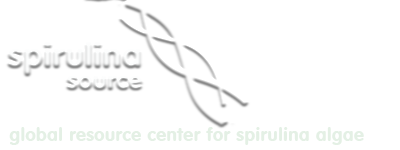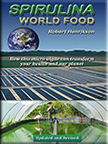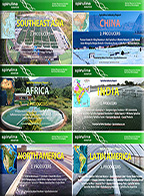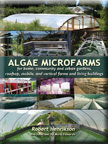REFERENCES AND ABSTRACTS BY HEALTH CATEGORY
Spirulina scientific reference library. Over 100 references covering 45 years of international research.
Click on PDF Download button for free pdf file.
![]() Antiviral activity of cultured blue-green algae.
Antiviral activity of cultured blue-green algae.
by Gregory Patterson et al. 1993. Pub. in Journal of Phycology 29, 125-130. USA.
Pharmaceutical drug discovery has, for most of the past 40 years, depended heavily on the process of empirically screening large numbers of pure organic compounds or crude natural product extracts to provide new leads. New sources of cultivable microorganisms for screening are thus of paramount importance. The blue-green algae, or cyanobacteria, constitute such a group of microbes. They can be cultured in the laboratory with relative ease to provide a consistent source of biologically active secondary metabolites. Our goals were to examine the distribution of antiviral compounds among the bluegreen algae and to determine whether particular geographic or physical sites are especially likely to yield active leads. More recently, the U.S. National Cancer Institute (NCI) has begun a comprehensive preclinical drug development program for acquired immunodeficiency syndrome (AIDS).
Lipophilic and hydrophilic extracts from approximately 600 strains of cultured cyanophytes, representing some 300 species, were examined for antiviral activity against three pathogenic viruses. Approximately 10% of the cultures produced substances that caused significant reduction in cytopathic effect normally associated with viral infection. The screening program identified Chroocococcales as commonly producing antiviral agents.
AIDS Antiviral sulfolipids from cyanobacteria (blue-green algae).
by K. Gustafson, et al. August 16, 1989. Pub. in Journal of the National Cancer Institute, 81(16) pg. 1254. USA.
Sulfoglycolipids from blue-green algae exhibit strong antiviral properties. Helper T-cells exposed to blue-green algae-sulfoglycolipids were protected from HIV-1 infection in in vitro studies.
Biotechnology & Utilization of Algae: The Indian Experience.
by L.V. Venkataraman and E.W. Becker. 1985. Pub. by Sharada Press. Pg 114-115. Mangalore, India.
Glycolipids isolated from spirulina.
by N. Kataoka, et al. 1983. Pub. in Agric. Biol. Chem. 47(10), 2349-2355. Japan.
Several glycolipids were isolated from spirulina by systematic fractionation with different solvents. Structural investigation using methylation, GC-MS and enzymatic techniques indicated four major glycolipids. Main fatty acid components of these glycolipids were identified as palmitic acid and linoleic or linolenic acid. Based on this fatty acid composition, spirulina glycolipids were compared with those in higher plants.




